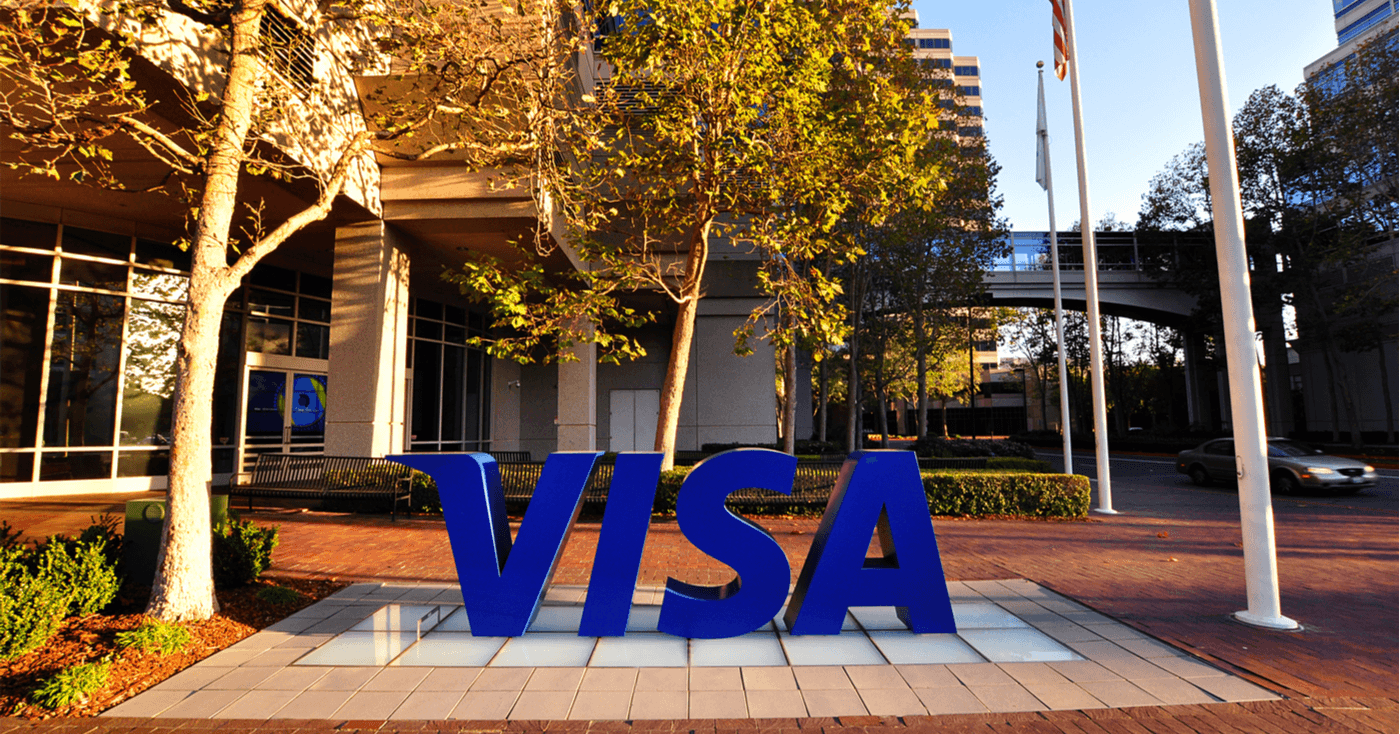Visa Partners With ConsenSys to Develop CBDC On-ramp Tool
Payment company collaborates with blockchain tech firm in effort to boost adoption of potential central bank digital currencies

Visa headquarters in Foster City, California; Source: Shutterstock
- Visa’s module is designed to allow central bank digital currency networks to connect to traditional financial service providers
- Federal Reserve Chairman Jerome Powell said Tuesday that the agency’s report on digital currencies is expected in the coming weeks
Visa has announced a partnership with blockchain technology company ConsenSys to develop a module designed to help central banks and financial institutions build user-friendly services on top of central bank digital currency (CBDC) networks.
The alliance bridges new CBDC frameworks with the existing financial ecosystem to create a roadmap for adoption and allow consumers to spend CBDCs at any merchant that accepts Visa, according to the company.
A topical subject
CBDCs differ from decentralized currencies like bitcoin, as they are issued and backed by a government and transact on a centralized permissioned blockchain.
“We’ve spoken with nearly 30 central banks to understand their perspectives on CBDCs and to identify the ways in which our network, infrastructure and value-added services can support them,” a Visa spokesperson told Blockworks.
Federal Reserve Chairman Jerome Powell said during his confirmation hearing in front of the Senate Banking Committee Tuesday that a report on digital currencies can be expected in the coming weeks. Powell added during the hearing that he believes CBDCs and privately issued stablecoins can co-exist.
US Rep. Tom Emmer (R-Minn.) proposed a bill on Wednesday that would prevent the Fed from issuing a CBDC directly to individuals, noting in a statement that the US government should not compete with the private sector in this space.
The Visa representative said the company is not in a position to predict if and when the Federal Reserve or other central banks could launch CBDCs.
“If successful, CBDC could expand access to financial services and make government disbursements more efficient, targeted, and secure,” Catherine Gu, Visa’s head of CBDC, said in a blog post published Thursday. “That’s an attractive proposition for policy makers.”
Use cases for such a digital currency include sending stimulus payments quickly to a targeted set of users with specific spending parameters, Gu added.
But central banks and traditional financial players will have to work together in order to see widespread CBDC adoption, according to Shailee Adinolfi, director of strategic sales at ConsenSys.
ConsenSys has helped build CBDC pilots for the National Australia Bank, Bank of Thailand, Societe Generale-Forge, Hong Kong Monetary Authority and other central banks, a spokesperson for the company told Blockworks.
“In our work with central banks, we’ve seen strong interest in receiving expertise and support from the private sector,” Adinolfi said in the blog post. “They are interested in piloting concrete use cases that will significantly benefit the efficiency and resources required to transfer assets and reconcile accounts.”
The Visa CBDC payments module
Gu noted that making sure that CBDCs can be accepted by businesses from day one by connecting to existing payment infrastructure will allow developers, fintechs and financial institutions to build on top of CBDC networks.
Visa’s CBDC Payments Module is designed to provide an on-ramp to existing payment networks, so that CBDC networks can easily connect to financial service providers, according to the firm. Banks will be able to plug into the module and integrate their existing infrastructure, allowing them to issue CBDC-linked payment cards, for example.
“We envision a user experience that looks very familiar to how you pay today,” Gu explained. “If CBDC networks are seamlessly integrated into your existing banking app, you’d be able to use your CBDC-linked Visa card at the checkout.”
Visa is in the process of integrating its module with the ConsenSys Codefi CBDC sandbox, which is powered by ConsenSys Quorum, an open-source version of the Ethereum protocol that’s optimized for enterprise applications.
“It can enable a two-tier CBDC system for central banks to issue and distribute CBDC,” Adinolfi said. “Quorum’s robust open-source protocol layer ensures compatibility with private permissioned and Ethereum Mainnet networks as well as familiar products and tooling in the Ethereum ecosystem.”
ConsenSys last month announced its collaboration with Mastercard to address the challenge of scalable applications on the Quorum tech-stack.
Visa expects to pilot the module’s use cases in the spring, Gu said, at which point the company will be ready to work with central banks, financial institutions and fintechs to integrate the module into their technology stacks.
Get the news in your inbox. Explore Blockworks newsletters:
- The Breakdown: Decoding crypto and the markets. Daily.
- 0xResearch: Alpha in your inbox. Think like an analyst.






